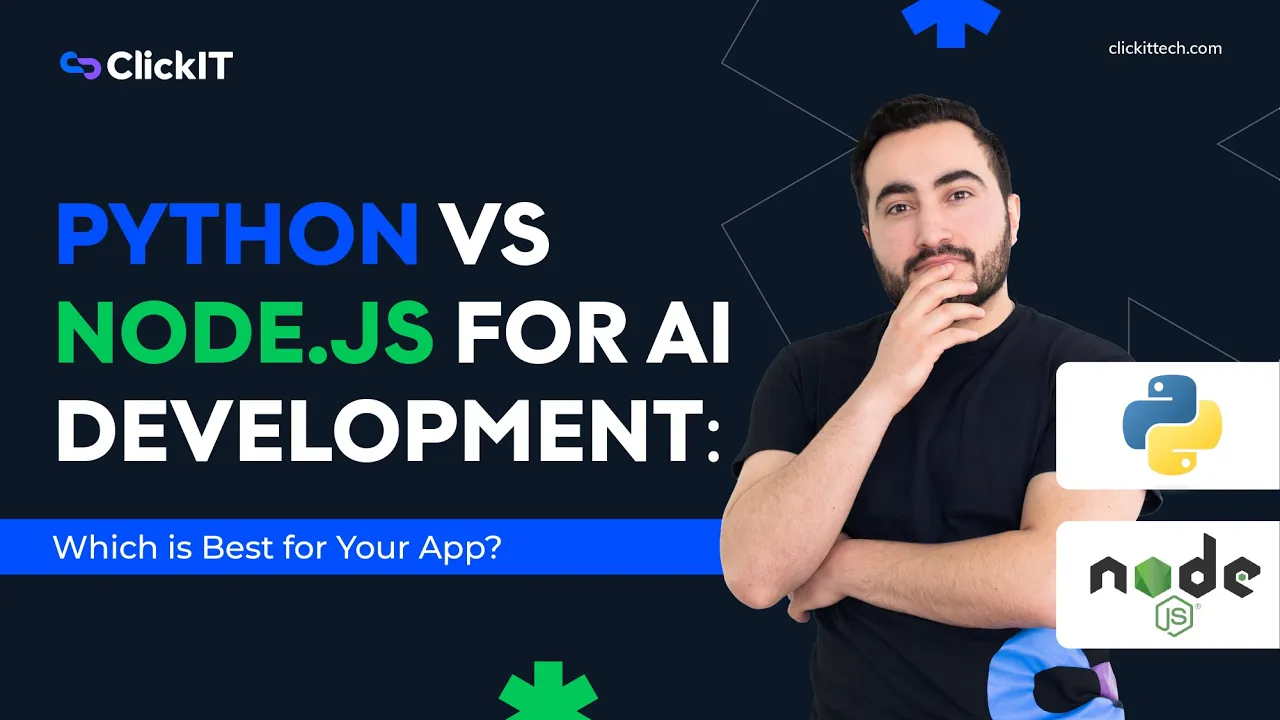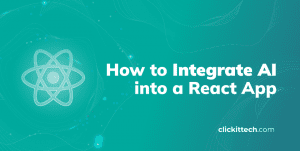Today, I will discuss which one is better, Python vs Node.js for AI development, so before we compare them, let’s quickly introduce them.
Python is a high-level programming language known for its simplicity and readability. With Python, you can mainly do web development, automation, AI, and machine learning.
About 48% of programmers worldwide use Python, which is hugely popular in the AI community because of its extensive libraries and frameworks.
If you’ve heard of TensorFlow or PyTorch, those are Python-based AI frameworks. Thanks to its intuitive syntax and powerful libraries, Python makes it easy to prototype ideas and crunch data.
If you want to learn more, watch our video Tensorflow vs Pytorch
On the other hand, Node.js is a runtime that lets you run JavaScript on the server side. It’s built on Chrome’s super-fast V8 engine, which means Node.js is blazing fast for I/O and web services.
34% of developers use Node.js worldwide, especially for backend services. Why? Node.js uses an event-driven, non-blocking architecture to handle thousands of concurrent connections without breaking a sweat. In summary, Node is great for real-time applications and can use JavaScript for both client and server, one language across your whole stack.
So, Python is like the data science guru, and Node.js is the speed demon for the web.
Python vs Node.js for AI Development Comparison
Regarding raw performance and speed, especially for web services, Node.js often has the edge. Node’s engine compiles JavaScript to machine code at runtime, making execution fast. Its non-blocking event loop can handle multiple requests in parallel, which is fantastic for AI applications that need to serve many users or IoT devices simultaneously.
For example, in one experiment, Node.js outperformed Python in handling a high volume of concurrent API requests to an AI service. Node’s performance can keep response times snappy if your AI solution involves real-time data or many simultaneous users. Its event-driven nature was built for speed, giving it an advantage in throughput and latency for web APIs.
Python, in contrast, is generally slower at runtime for these kinds of tasks. Python executes code line by line (it’s interpreted), and it wasn’t designed with asynchronous web servers in mind. By default, Python is single-threaded (thanks to something called the Global Interpreter Lock) and processes requests one at a time.
This could become a bottleneck for an AI-powered web service—requests will queue up and take longer if you don’t add a workaround.
Yes, Python can do asynchronous programming (with libraries like Asyncio) or multi-processing, but it’s not as straightforward or efficient as Node’s built-in non-blocking model. In a Python vs Node.js race for handling many small, quick tasks or network calls, Node.js wins the speed trophy.
However, and this is important, AI development isn’t only about serving web requests. It’s also about number crunching, model training, and heavy computation. Python has a secret weapon: most AI libraries (like NumPy, Pandas, or TensorFlow) use optimized C/C++ code under the hood.
So when Python does intensive machine learning calculations, much of that work is offloaded to fast lower-level code. The result? Python can handle heavy math and data processing efficiently despite the slower language. Node.js can perform computations too, but JavaScript doesn’t have the same wealth of optimized math libraries. For serious neural network training or complex analytics, Python typically runs circles around pure Node.js regarding ease and speed of development.
Bottom line: Python’s ecosystem delivers excellent AI model training and data-heavy computation performance. However, for handling high-volume, concurrent users or real-time data feeds, Node.js provides faster, more scalable performance at the application level.
Need help with AI in Python or Node.js?
Hire our expert developers and get started today. Let’s talk →
Which Should You Choose for AI Development: Python vs Node.js?
So, Python or Node.js? The truth is, there’s no one-size-fits-all answer – but I can give you some clear guidelines:
- Choose Python if your project involves heavy AI/ML development, data analysis, or rapid prototyping of AI models. Python was made for AI with its simple syntax and powerful ML libraries. It will let your data scientists iterate quickly and use state-of-the-art algorithms off the shelf. If you need to do deep learning, computer vision, or scientific computing in an enterprise setting, Python is usually the better tool for the job.
- Choose Node.js if your project is an AI-enabled application that requires real-time performance, high scalability, and seamless integration with web technologies. Node.js is ideal when the AI part is just one component of a larger system. For example, a recommendation API that needs to handle thousands of requests per second or a live chat application with AI-driven features.
Remember, in AI development, it’s not about one language to rule them all but picking the right tool for the job.
Need help with AI implementation? Whether you’re leaning towards Node.js or Python, our team at ClickIT is ready to help you!









